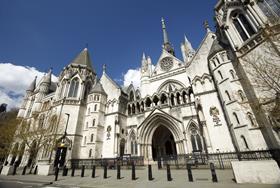

Ten-year-old Sara Sharif was tragically murdered by her father, Urfan Sharif, and stepmother, Beinash Batool, in August 2023. Her death has garnered widespread attention, due to the brutality she suffered at the hands of those who should have cared for her. Sara was placed under a Child Protection Plan from birth due to concerns about the risks posed by her parents – concerns that would resurface throughout her short life. As a result, Sara was the subject of three family court cases in 2021, 2014 and 2019 where Sara and her parents were assessed by professionals who would provide evidence to the court. The decisions of three judges would shape Sara’s life – they ordered that she spend various periods of time in foster care, her mother’s care and ultimately, her father’s care.
The tragic circumstances of Sara’s death raise critical questions: how could a child, known to multiple child protection professionals and involved in three family court cases, be subjected to such a horrific fate? The answers may lie in the media examining and reporting on the historic court documents to enable the public to scrutinise decisions made.
The process of the media reporting on these court documents, along with revealing the names of the professionals and judges involved, has sparked a legal battle. This unfolds against the backdrop of a movement advocating for greater transparency in the family courts.
For many years, the family courts have operated with significant restrictions on the media reporting any information about a case involving children because of their privacy. Historically, therefore, the family court system has been opaque, leading to public accusations of ‘secret’ justice.
In recent years, there has been a sea change towards greater transparency. Following a pilot project, since 27 January 2025, open reporting provisions now apply to all family courts in England and Wales. This means that journalists and legal bloggers can report on what they see and hear in family courts with a transparency order protecting the anonymity of children and their families.
It is in this context that journalists Louise Tickle and Hannah Summers, along with nine big name media parties, applied to the High Court to report upon the historic court cases relating to Sara. They said that there was an overwhelming public interest in understanding how Sara came to be placed in her father’s care and the effectiveness of safeguarding procedures and so full details should be reported upon including the names of the professionals and judges involved.
Mr Justice Williams heard the case on 9 December 2024 on the cusp of the verdict being given in the criminal trial of Sharif and Batool. He balanced Article 8 rights to respect for private and family life (particularly those of the children) and the Article 10 freedom of expression rights of the media. He concluded that he would allow the media parties to see and report upon many historic case papers subject to restrictions keeping the names, ages and protected characteristics of Sara’s siblings confidential.
He ruled however that there be no reporting of any third party including social workers, guardians and judges. Was that decision just?
He had intended to reconsider the issue of the anonymity of judges in March 2025 when the judges themselves had been notified. The media parties however immediately appealed to the Court of Appeal saying that the naming of judges is a matter of exceptionally high constitutional and public importance and that Mr Justice Williams’ decision was a derogation from the principle of open justice.
The Court of Appeal considered: did the High Court have the power to anonymise the judges’ identities? Was the decision procedurally irregular? For example, there was no evidence that the judges would be harmed. Finally, was Mr Justice Williams biased against the media?
The Court of Appeal concluded that Mr Justice Williams was wrong, and his decision could not stand. He had no powers to make the anonymity order he did, and his decision was procedurally flawed. He was heavily criticised for getting ‘carried away’ – using his own experiences to create a case for anonymising the judges rather than on the law and the evidence. He behaved unfairly to the journalists in finding that their reporting to date had been inaccurate and irresponsible and that his sarcastic remarks about the media had no proper place in a court judgment.
The Court of Appeal said that the judge had lost sight of the importance of press scrutiny in upholding the integrity of the justice system and that the historic judges must be named, allowing 7 days for them to prepare and to protect themselves from potential harm.
The landmark shift in transparency in family courts comes at a pivotal moment: the same week that the identities of judges responsible for the historic decisions for Sara Sherif have been revealed.
As of 10am on Friday 31 January the judges were named as HHJ Raeside, HHJ Nathan and HHJ Williams.
Sara’s heartbreaking story intertwines with core legal principles of open justice. The message is clear: judges’ decisions affecting children must be subject to scrutiny and their identities known.
The call for accountability and openness in family law has never been stronger.
Sarah Inchley is a partner in the family law team at TV Edwards Solicitors






